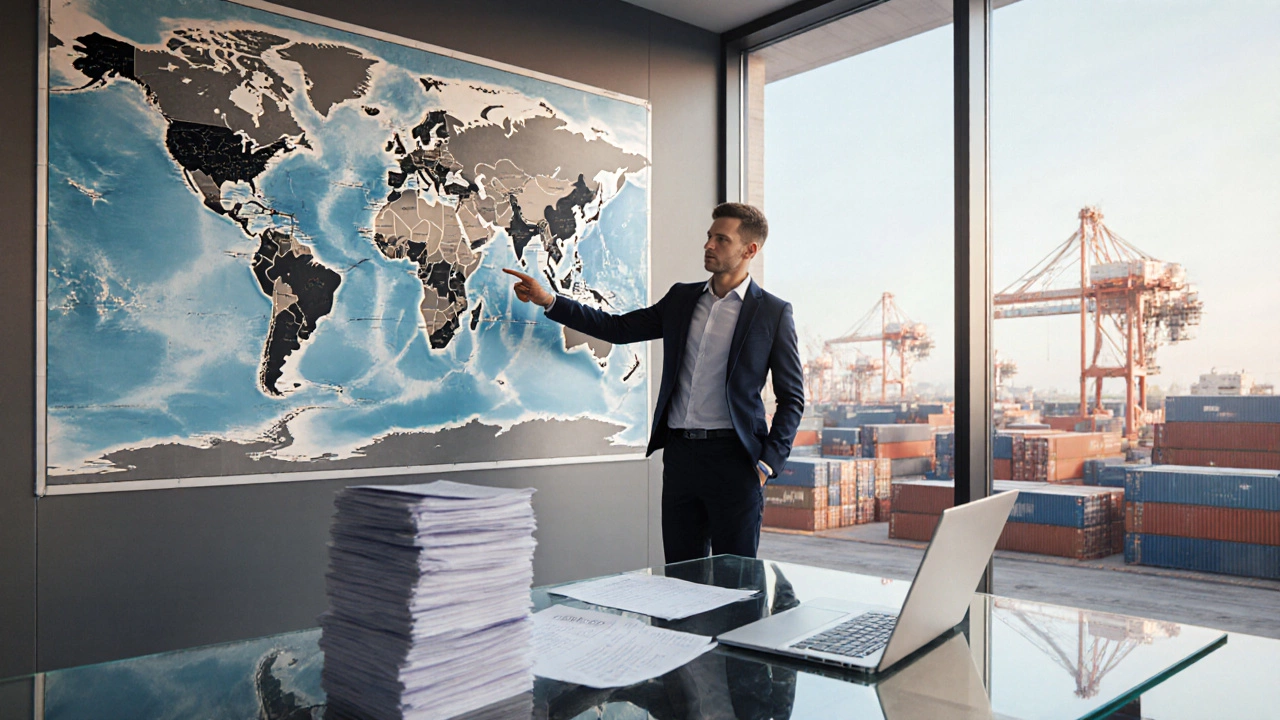What Does a Freight Forwarder Do? Explained in Simple Terms
Learn what a freight forwarder does, the services they provide, the step‑by‑step process, and how to choose the right partner for seamless international shipping.
When handling Customs Clearance, the official procedure that lets shipments cross borders by meeting legal, tax, and safety rules. Also known as customs processing, it’s a must‑step for any international move. Customs clearance encompasses Customs Documentation, the paperwork—commercial invoices, packing lists, certificates of origin—required by customs authorities, and it requires Freight Forwarding, a service that coordinates transport, handles paperwork, and negotiates duties. Meanwhile, International Shipping, the movement of goods between countries directly influences customs clearance because every border crossing triggers a clearance event. In short, customs clearance encompasses documentation, requires freight forwarding, and is influenced by international shipping practices.
Think of customs clearance as the gatekeeper that can speed up or stall your bike’s journey from Chennai to any overseas destination. Without proper clearance, your bike could sit in a warehouse for days, incurring storage fees and missed deadlines. Freight forwarders act like translators; they turn your shipping invoice into a format customs understands, calculate duties based on the Harmonized System code, and submit the forms electronically. This mirrors what you’ll read in articles about courier price breakdowns or the math behind logistics—both rely on accurate cost inputs, which customs duties are a big part of. International shipping rates, such as those detailed in the USPS overseas guide, often include an estimate for customs fees, but the final amount can swing based on product classification, declared value, and trade agreements. Missing a single document or mis‑declaring weight can trigger a hold, leading to penalties. That’s why aligning your logistics plan with customs requirements early—just like you’d plan for cut‑off times for next‑day delivery—prevents surprise costs and delays.
Modern e‑logistics platforms now bundle customs filing into their workflow, letting you track duties in real time, much like you track a courier’s delivery window. Tools that calculate shipping costs also incorporate customs fees, giving you a single price to quote customers. For bike owners, this means you can request a door‑to‑door quote that already covers packing, freight forwarding, customs clearance, and final delivery. The same principle applies to any business moving goods: understand the interplay between logistics, documentation, and border regulations, and you’ll turn a potentially painful step into a smooth part of the supply chain. Below you’ll find a curated set of articles that dive deeper into related topics—from freight forwarding basics to international shipping rate tables—so you can build a complete picture of how customs clearance fits into the bigger logistics puzzle.

Learn what a freight forwarder does, the services they provide, the step‑by‑step process, and how to choose the right partner for seamless international shipping.